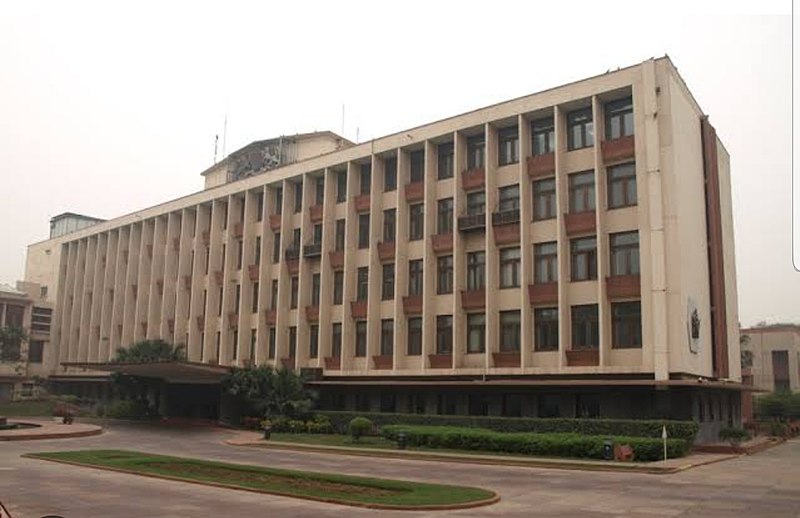Manas Dasgupta
NEW DELHI, Mar 22: Even as the police removed the barricades outside the British High Commission in New Delhi on Wednesday, more policemen and barricades were installed outside the Indian High Commission in London apparently to amend the security breach on Sunday when the pro-Khailtani elements had vandalised the Mission building and had damaged the Indian Tricolour.
Police officers, liaison officers, and patrol officers were seen on duty and more policemen and barricades were installed outside the building known as India Place in central London, where a giant Indian flag remained strung between windows following Sunday’s incident. The security was enhanced in London ahead of a planned protest in an apparent effort to prevent a repeat of the vandalism seen three days ago.
The step came shortly after the police in New Delhi removed cement blocks that acted as barricades in front of the British High Commission in Delhi and the British High Commissioner’s residence in what was seen as a demonstration of India’s displeasure and retaliation for the lack of visible security at the Indian High Commission in London.
The Indian government had lodged a protest by calling in the senior-most diplomat at the British High Commission. The Ministry of External Affairs had demanded an explanation for the complete absence of British security that allowed these elements to enter the High Commission premises. “She [Deputy High Commissioner Christina Scott] was reminded in this regard of the basic obligations of the UK Government under the Vienna Convention,” MEA had said, adding that “India finds unacceptable the indifference of the UK Government to the security of Indian diplomatic premises and personnel in the UK.”
The Delhi Police sources said around 12 barricades from outside the British High Commission and the residence of the British High Commissioner in Chanakyapuri were removed after directions from Delhi Police headquarters. While there was no official word from the Indian government on the possible downgrading of the security, the lack of visible security — cement blocks acting as barricades — was evident on Wednesday.
India had summoned a senior British diplomat in Delhi after the demonstration at the High Commission in Aldwych where windows were broken, and the Indian flag was taken down from the first-floor balcony of the building by a protester before it was rescued by an official.
The Ministry of External Affairs had issued a statement saying the senior diplomat had been asked to explain “the complete absence of British security” as the crowd targeted the building, waving yellow “Khalistan” banners.
The protest had been called over a massive manhunt in India for Amritpal Singh, a supporter of the Khalistan movement who has been on the run since Saturday. Followed by hundreds of armed supporters, he had stormed a police station last month.
Commenting on the removal of barricades outside the British High Commission, a senior police officer in Delhi said, “The security arrangements… are intact. However, barricades placed on the pathway towards the Commission that created hurdles for commutation have been removed.” A spokesperson for the British High Commission said, “We do not comment on security matters.”
Top British officials have said the UK government would take the security of the Indian High Commission “seriously”, as they condemned the vandalism at the Indian mission as “disgraceful” and “completely unacceptable.”
Sources in the mission said the barricades were removed by the Delhi Police without giving any reason. On Sunday, the Ministry of External Affairs had summoned the senior-most British diplomat and registered a strong protest against the incident in London. British High Commissioner Alex Ellis is currently out of country.
The formal protest was followed by a large anti-U.K. demonstration which was organised outside the U.K. High Commission in Chanakyapuri on Monday. The High Commission was surrounded by the Sikh protesters who demanded that the U.K. authorities should increase security to the Indian mission and other India-related addresses in the U.K. The Ministry of External Affairs had refused to comment to the development, saying, “security issues are not under the Ministry’s purview.”
The removal of the barricades from outside the U.K.’s mission and residence of its top diplomat in New Delhi’s Rajaji Marg revived the memories of the “Khobragade incident” of December 2013 when the barricades around the Embassy of the United States were removed after Indian Consul General in New York Devyani Khobragade was subjected to ill treatment by the U.S. authorities for alleged violation of labour rules in her residence.
India’s ties with the U.K. took a nosedive after the BBC broadcast a documentary on the 2002 Gujarat Riots and the Prime Minister Narendra Modi who then was the chief minister of his home state. Soon thereafter the BBC was raided by taxmen who called the move a “survey.” The raid by a team of the income tax officials drew attention in the U.K.’s Parliament where MPs condemned the raid and the Labour party termed it “deeply worrying.”
The U.K.’s mission has been one of the most secure diplomatic addresses in New Delhi for decades and the measures were further tightened after the war in Afghanistan of 2001 when the security parametre was expanded and stronger walls were erected around the mission and the residential quarters of serving British diplomats. Though there has been no recent attacks against the High Commission and staff, the Deputy High Commissioner of the U.K. Percy Norris was killed in 1984 by unknown assailants in Mumbai. The case was never fully investigated.

